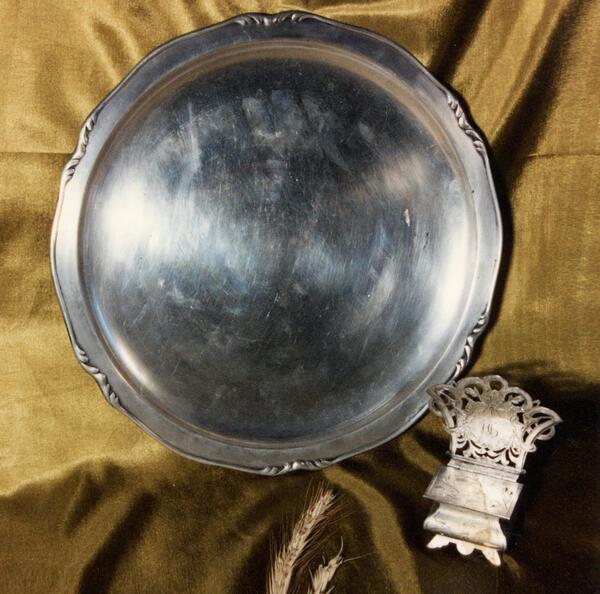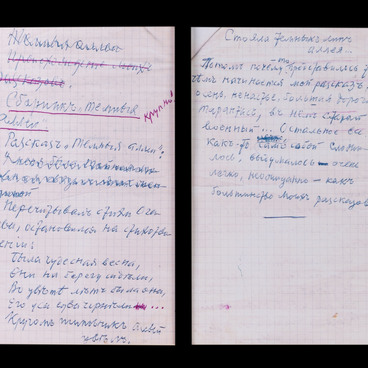In November 1933, by the decision of the Swedish Academy, Ivan Bunin was awarded the Nobel Prize in Literature ‘for his true artistic talent, with which he recreated a typical Russian character in fiction’. Bunin found out about it in the town of Grasse, where he rented a small villa. On November 14, the writer arrived to Paris. In a comfortable hotel ‘Majestic’ he was provided with luxury apartments consisting of several rooms. The French capital honoured the writer until his departure to Stockholm – at banquets, in publishing houses, in newspaper offices, even at the Champs-Élysées theatre with a huge crowd of people.
On December 6, Ivan Bunin, his wife Vera Muromtseva, poetess Galina Kuznetsova and the writer’s secretary Andrei Sedykh arrived in Stockholm, where the awards ceremony was held. Kuznetsova wrote in “Grasse Diary”: “At the train station in Stockholm, Russian and Swedish crowd greeted us. Some Russian made a speech, brought “bread and salt” on a silver dish with an embroidered towel’. All Swedish newspapers published pictures of Bunin with a loaf of bread and a salt cellar on a tray covered with a white towel with red embroidery.
On December 10, the Nobel Prize ceremony took place in the Concert Hall of the Musical House with special solemnity – in 1933 the 100th anniversary of the birth of the founder of the Alfred Nobel Prize was celebrated. During the awarding ceremony, each laureate received from the hands of the Swedish king Gustaf V a folder with a Nobel diploma and a case with a gold medal, on one side of which the image of Nobel was engraved, and on the other – the name of the laureate. As the press noted, Bunin accepted the prize from the hands of the king with exceptional dignity and restraint: ‘The king of literature confidently and with equal rights shook hands with the crowned monarch’.
The popularity and authority of Ivan Bunin after this event increased incredibly. Photos of the laureate and materials about him were on the pages of Russian emigrant newspapers for a long time. For example, on December 10, 1933 the leading article of the newspaper ‘Poslednie novosti’ reported: ‘Now the all-Russian fame of Bunin has turned into world fame. This is a great moral victory for Russian literature’.
On December 6, Ivan Bunin, his wife Vera Muromtseva, poetess Galina Kuznetsova and the writer’s secretary Andrei Sedykh arrived in Stockholm, where the awards ceremony was held. Kuznetsova wrote in “Grasse Diary”: “At the train station in Stockholm, Russian and Swedish crowd greeted us. Some Russian made a speech, brought “bread and salt” on a silver dish with an embroidered towel’. All Swedish newspapers published pictures of Bunin with a loaf of bread and a salt cellar on a tray covered with a white towel with red embroidery.
On December 10, the Nobel Prize ceremony took place in the Concert Hall of the Musical House with special solemnity – in 1933 the 100th anniversary of the birth of the founder of the Alfred Nobel Prize was celebrated. During the awarding ceremony, each laureate received from the hands of the Swedish king Gustaf V a folder with a Nobel diploma and a case with a gold medal, on one side of which the image of Nobel was engraved, and on the other – the name of the laureate. As the press noted, Bunin accepted the prize from the hands of the king with exceptional dignity and restraint: ‘The king of literature confidently and with equal rights shook hands with the crowned monarch’.
The popularity and authority of Ivan Bunin after this event increased incredibly. Photos of the laureate and materials about him were on the pages of Russian emigrant newspapers for a long time. For example, on December 10, 1933 the leading article of the newspaper ‘Poslednie novosti’ reported: ‘Now the all-Russian fame of Bunin has turned into world fame. This is a great moral victory for Russian literature’.


